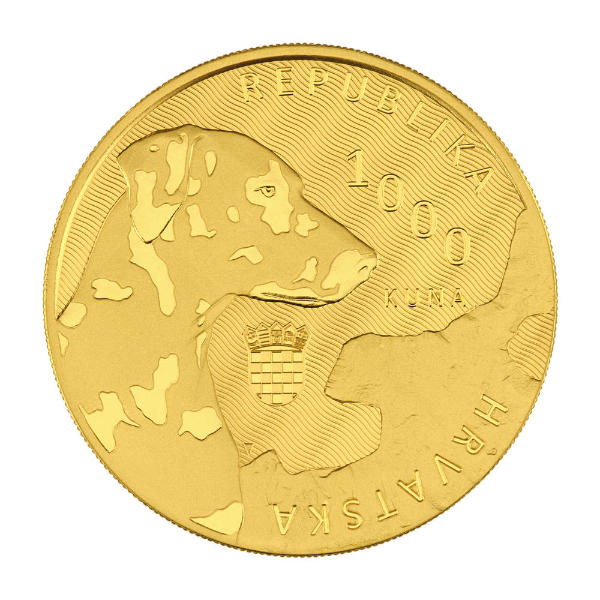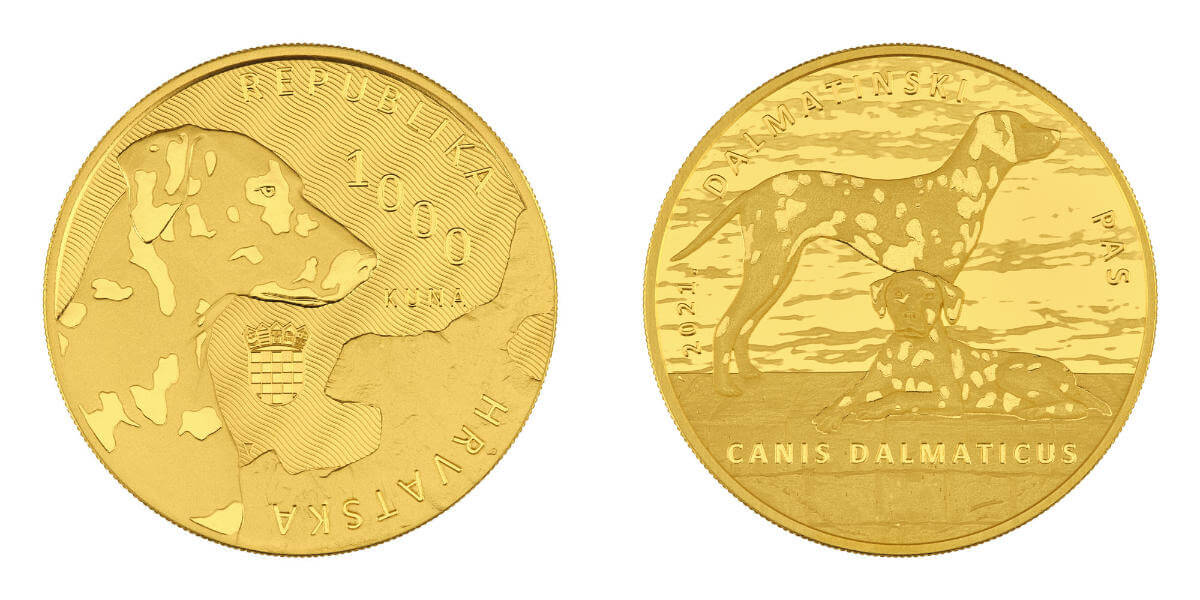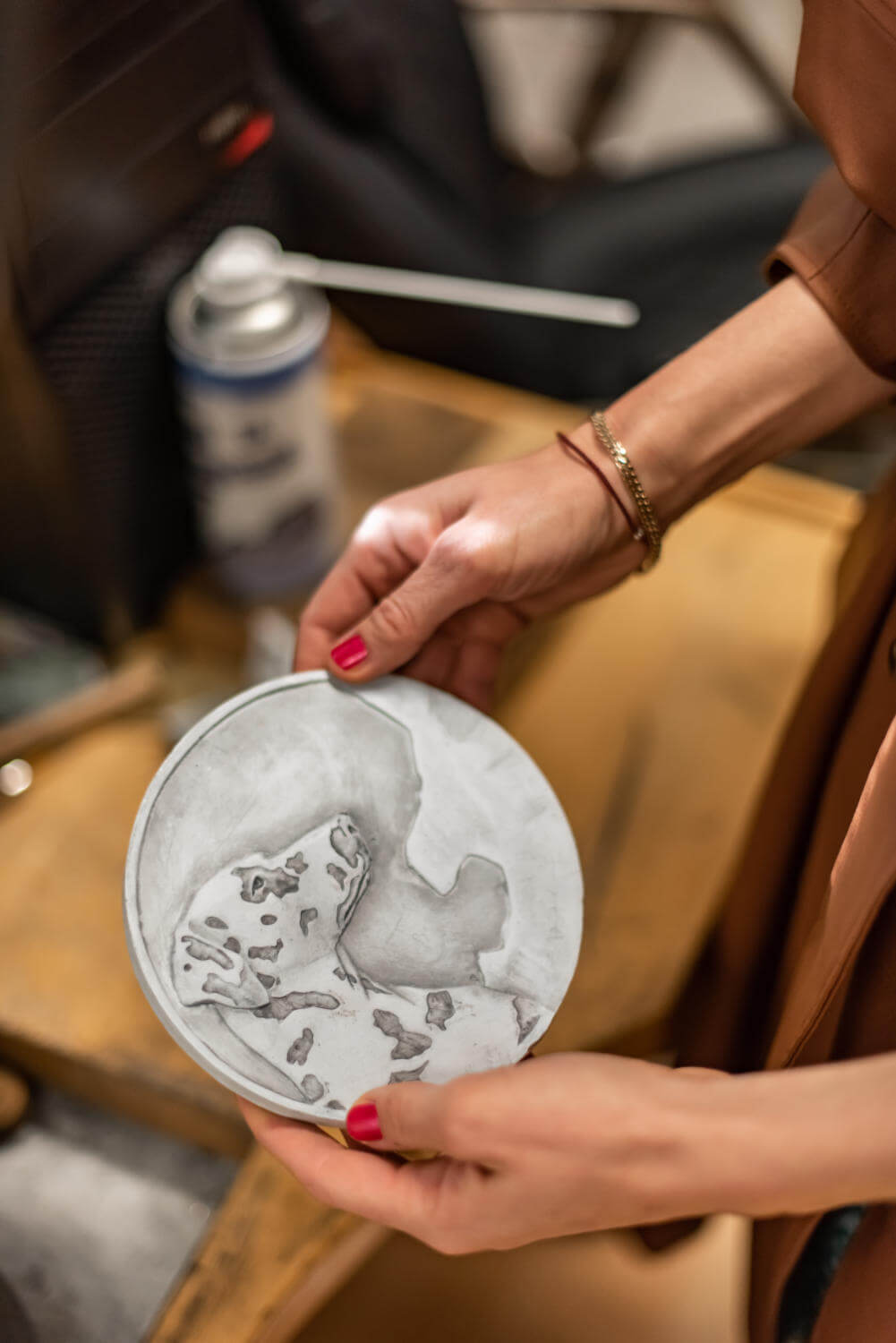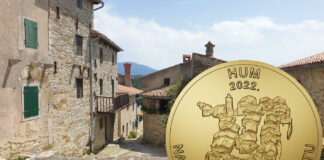Pongo and Perdita are still among the most popular names to call Dalmatians across the globe. Ever since Walt Disney’s movie “101 Dalmatians” came out, this dog breed has been enjoying international popularity. Dalmatians are considered playful, family-friendly and easy to care for. However, most people forget that Dalmatians are actually hunting and guard dogs that were originally bred to be persevering travel companions and watchdogs.
Dalmatian dogs are named after their area of origin, Dalmatia in Croatia. Therefore, they are wonderful representatives of the autochthonous fauna and flora, to which the Croatian national bank dedicates its new series. “Dalmatian Dog” is the first issue and there are three versions: a 1,000 kuna piece in gold, a small gold coin with a face value of 50 kuna and a 10 kuna silver version.
The Dalmatian and Dalmatia
As its name suggests, the Dalmatian is from Dalmatia in Croatia. This is evidenced by early depictions from the ecclesiastical context: the church Gospe od Anđela in Veli Lošinj can boast about having an altarpiece and the Franciscan monastery of Zaostrog about having a fresco which are the first to depict the Dalmatian with its typical appearance. The first written accounts date back to the early 18th century. The authors were clerics of the Croatian diocese of Đakovo.
From Dalmatia, English travellers brought the elegant, black spotted dog to their homeland. Starting in the 18th century, it served as a “coach dog” to traveling merchants: they accompanied their master’s carriage on country roads, which were still unsafe at the time, to stake their life in the fight against any imminent danger. The term “Dalmatian” used by the zoologist Thomas Pennant in his History of Quadrupeds of 1781 became virtually synonymous with coach dogs in Great Britain. Since these dogs were highly popular among the English upper class, the first Dalmatian Club was founded in 1890. It was the first to establish a breed standard for Dalmatians. In 1994, the International Cynological Federation (FCI) recognized the Dalmatian as an autochthonous dog breed of Croatia.
The Coins
The three coin types of the issue “Dalmatian Dog” from the “Autochthonous Croatia” series show the same motif: on the obverse featuring the coat of arms, the denomination as well as the name of the country you will see the head of a Dalmatian with the typical spots, which are shaped like the most beautiful Croatian islands. In the background you can see a map of Croatia, the Adriatic Sea meticulously displayed by a delicate wave-structure.
The reverse presents two Dalmatians with the breed name in Croatian and Latin, in the left field the year.
The technical perfection applied to create various finishes is remarkable: achieving alternating frosted and proof areas against the delicate lines of the waves requires the highest level of minting precision.
Collectors should keep in mind that Croatia is about to join the euro zone, which should increase interest in Croatian coins.
The Artist
The Croatian artist Nikola Vudrag is one of the country’s sculptors with the most international renown. He was inspired by five purebred Dalmatians bred by Pjegava Sanjaska. In a cooperation with the mint and the Croatian national bank, a three-dimensional model was developed in an elaborate process depicting the Dalmatian as an adorable ambassador of the Republic of Croatia. The model was then translated into obverse and reverse dies.
For more information on the coins go to the website of the Croatian Mint.
This summer a new coin set commemorated 30 years of Croatian independence.
Do you love dogs? Maybe you enjoy also the new Hungarian coin dedicated to the Hungarian Greyhound.
Here you can watch a famous scene of “Pongo and Perdita”:
Would you like to own a Dalmatian? Check the facts first!










